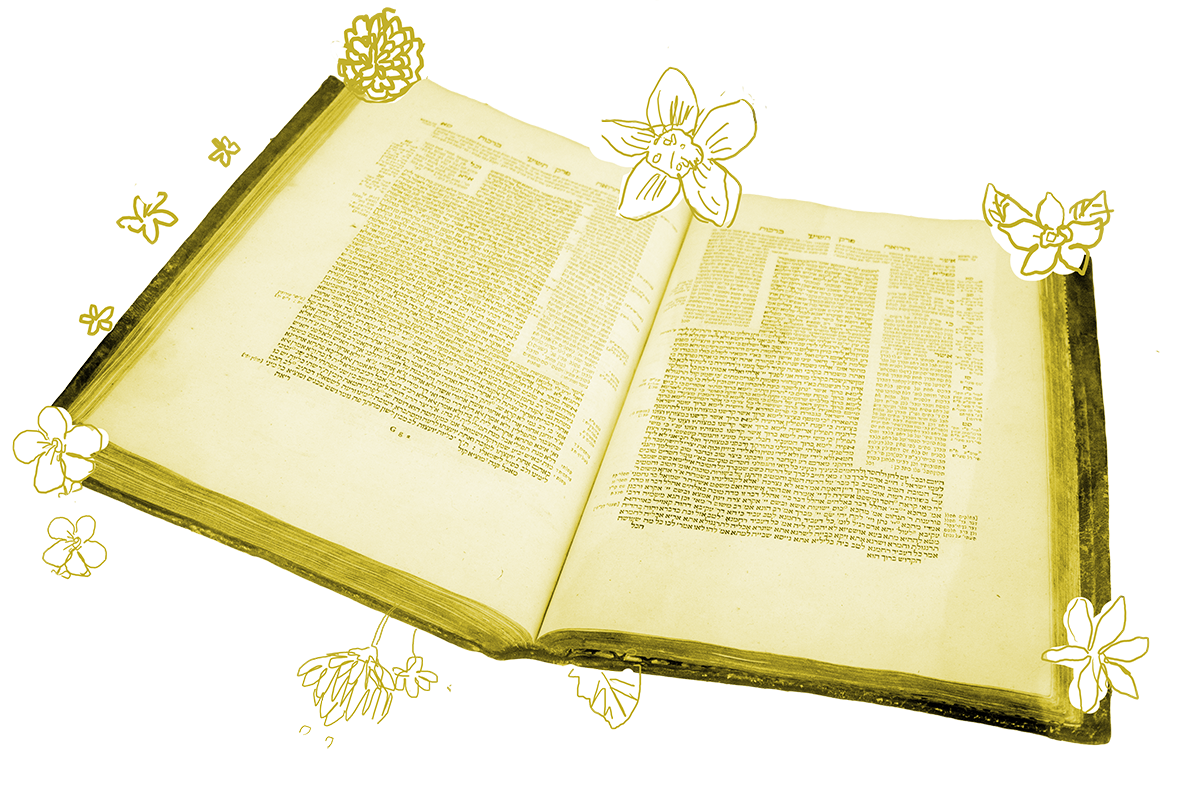The rabbis of the Talmud were a homosocial group. Homosocial is a sociology term for groups of people of the same sex in a tight-knit social circle. Think fraternities, all-male army corps, or traditional yeshivas. And indeed, the rabbis, and the various other social groups the Talmud describes (enforcers of the household of the Exilarch, the chaverim), are largely groups of men. When the Talmud talks about women, it is largely in the context of the household, the market, or of specific exceptional women who stand alone and do remarkable things, like engage with Torah.
But if we read today’s daf carefully, peering through the lattice of halakhic debate to the world behind it, we just may be able to see one possible version of Jewish women’s homosociality in late antiquity. The context is an early rabbinic tradition discussing what kinds of married women’s behavior the rabbis define as licentious, and specifically the kind of licentiousness that require her to be divorced.
If she ate in the marketplace, walked with her neck stretched forward in the marketplace, or nursed in the marketplace — with regard to all of these Rabbi Meir says she must leave (her marriage).
Rabbi Akiva says only once the mozarot by the moonlight converse about her.
With your help, My Jewish Learning can provide endless opportunities for learning, connection and discovery.
Let’s leave aside the question of what makes these behaviors licentious, and whether the category of licentiousness is in fact even a fruitful lens through which to think about marriage, and focus on Rabbi Akiva’s statement. For Rabbi Akiva, a woman’s behavior only reaches the point of licentiousness which affects her marriage when the mozarottalk about her. Who are the mozarot?
According to Jastrow’s dictionary, the verb mazar means to twist yarn. The feminine plural noun refers to the women who sit and twist yarn by the moonlight. What is striking about this description is that spinning is traditionally depicted as a solitary activity, one done by women as part of their household chores. Indeed, the rabbis often insist that spinning with others (at least in public) is its own licentious act.
And yet, the Talmud today describes a group of mozarot spinning together by moonlight and sharing the news of the day. Further down in today’s daf we get another image of these women, but this time they are spinning by candlelight. The rabbis describe these spinners as the arbiters of whether a rumor is a fact or whether a fact is just a rumor. In both cases, women’s spinning groups have a legal effect on whether a woman can stay married to her husband.
What are we to make of these descriptions? We might suppose that these rabbis, perhaps unfamiliar with the world of women — and perhaps also with spinning — just imagine groups of women doing it together by the light of the moon. After all, the story goes that Rabbi Akiva didn’t even live with his wife for 24 years. How would he know what kinds of crafts she did at night? And yet, it is also possible to see these descriptions as evidence that women did gather together to craft, even when those crafts could (and perhaps, for the rabbis, should) be done alone.
The rabbis were largely interested in the workings of their own homosocial community, and by extension, of their larger households. But sometimes, if we squint, we can see evidence of other kinds of community. Spinning is a craft that can be done largely through touch, so perhaps it was the perfect thing to do late at night. Imagine it: The work of the day is done and the kids are asleep. And the women gather to spin thread, stories and a community of their own.
Read all of Gittin 89 on Sefaria.
This piece originally appeared in a My Jewish Learning Daf Yomi email newsletter sent on August 13th, 2023. If you are interested in receiving the newsletter, sign up here.



